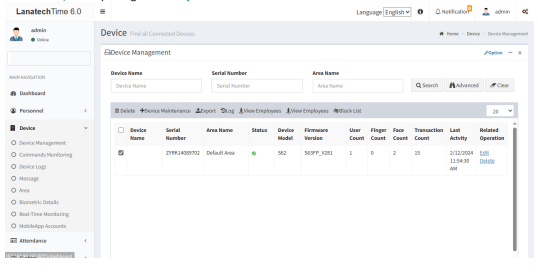Device Auto-Synchronization
Implementing automatic synchronization between attendance devices and a central server within the same area ensures that information remains current and accurate across all platforms. This process involves installing attendance devices, connecting them to the internet, and configuring system parameters to manage these devices effectively. Such synchronization facilitates digital management tasks, including uploading user attendance data, downloading configuration information, and generating various reports.
Key Steps for Implementation:
1. Device Installation and Internet Connectivity: Begin by installing attendance devices, such as biometric scanners or card readers, at relevant locations. Ensure each device has a stable internet connection to enable seamless data transmission.
2. System Configuration: Access the central management system to set parameters that define how devices communicate with the server. This setup allows for centralized control, enabling administrators to manage multiple devices from a single interface.
3. Data Synchronization: Configure the system to automatically synchronize data between devices and the server within the same area. This ensures that all attendance records are updated in real time, reducing the need for manual data retrieval and minimizing errors.
Benefits of Automatic Data Synchronization:
● Real-Time Data Accuracy: Automatic synchronization ensures that attendance data is consistently updated across all devices and the central server, providing accurate and timely information for decision-making.
● Efficient Digital Management: Administrators can remotely manage connected devices, upload user attendance data, download configuration settings, and export various reports, streamlining HR and administrative processes.
● Scalability: This system can efficiently manage multiple devices across various locations, making it suitable for organizations of different sizes.
Considerations:
● Compatibility: Ensure that the attendance devices and the central management system are compatible and support automatic synchronization features.
● Security: Implement robust security measures to protect data during transmission and storage, safeguarding employee information.
● Maintenance: Regularly update and maintain both hardware and software components to ensure continued reliability and performance.
By adopting automatic data synchronization, organizations can enhance the efficiency and accuracy of their attendance management systems, leading to improved workforce management and operational effectiveness.





















